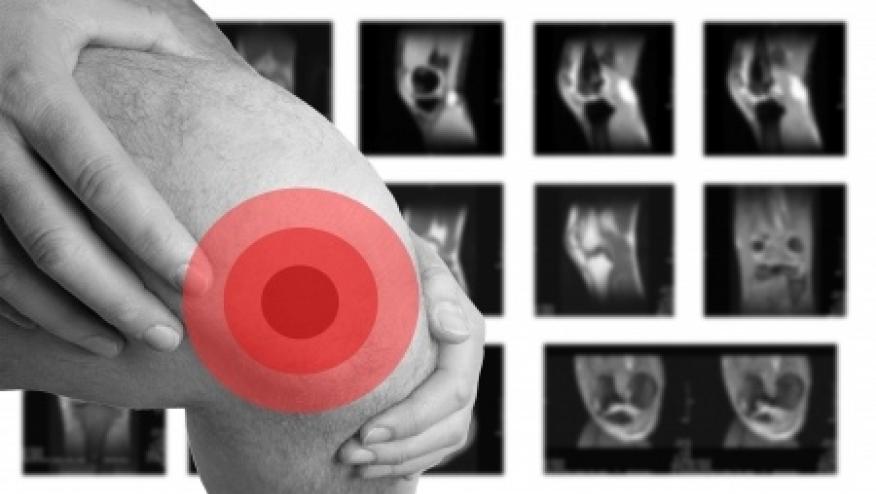MRI Findings Match Patients' Experience With RA Save

Patient-reported outcomes in rheumatoid arthritis (RA) correlate independently with measures of inflammation and structural damage on MRI scans, according to data from a longitudinal study.
For example, at 1 year, the change in MRI-detected synovitis was significantly associated with changes in physical function on the Health Assessment Questionnaire (HAQ) (beta = 0.53, 95% CI 0.029-0.077, P<0.001), according to Joshua F. Baker, MD, of the University of Pennsylvania in Philadelphia, and colleagues.
In addition, change in synovitis at 1 year was associated with pain scores (beta = 0.16, 95% CI 0.058-0.25, P=0.002) and patient global assessment (beta = 0.16, 95% CI 0.066-0.25, P=0.001), the researchers reported in Annals of the Rheumatic Diseases.
The association between longitudinal MRI measures and changes in patient-reported outcomes had not been assessed previously. For this analysis, the researchers used a cohort of 291 patients with MRI scores for synovitis, osteitis, and/or bone erosion from a larger group enrolled in the Go-BEFORE placebo-controlled clinical trial, which randomized methotrexate-naïve patients to golimumab (Simponi), methotrexate, or the combination.
MRIs were obtained at the patient's dominant wrist and second to fifth metacarpophalangeal joints, and the images were scored by two independent readers.
Correlations between the RA-MRI scoring system (synovitis, osteitis, and bone erosion) and physical function, pain, and global patient scores, were determined at weeks 0, 12, 24, and 52. Patients then were followed for an additional year.
MRI measures were associated with scores on the HAQ at all assessments, while MRI measures were increasingly associated with pain and patient global scores at later follow-up time points.
"Improvements in synovitis at 12, 24, and 52 weeks were generally associated with greater improvements in HAQ, pain and patient global scores," wrote Baker and colleagues. Changes in bone erosion were associated positively with changes in pain and patient global at later follow-up times.
In longitudinal regression models, synovitis was significantly associated with HAQ independent of the disease activity score in 28 joints (DAS28) using C-reactive protein (CRP). Synovitis was also associated with pain and patient global scores independent of CRP and swollen and tender joint counts.
Further, longitudinal models demonstrated that progression in bone erosion was associated with worse physical functioning, independent of synovitis and DAS28-CRP. These findings suggest that MRI measures are valid as RA biomarkers, and that the associations are independent of clinical disease activity.
"Thus, for two individuals with similar clinical assessments, the individual with greater synovitis on MRI is likely to have worse pain and function. These data indicate that synovitis and bone erosion are complementary to other clinical parameters in terms of relevance to the patient experience."
"The current study suggests that progression in the MRI erosion score (>0.5) is associated with a change in HAQ of 0.35 at 1 year," the investigators wrote. "In addition, a 4.4-unit change in MRI erosion score would translate into a change in HAQ of 0.2."
There was no relationship found between x-ray progression of disease and functional decline over 1 year, which suggests that MRI may be a better discriminator of functional decline, the authors suggested.
"Of note, we found that changes in synovitis were more strongly correlated with HAQ during the treatment of active inflammation in year 1, while changes in bone erosion were correlated similarly throughout the 2-year period," the authors added.
The correlations between patient-reported outcomes and MRI measures were similar regardless of the treatment received.
They concluded that, "improvements over time in MRI inflammation and deterioration in MRI damage correlate with changes in function, pain and patient global scores, suggesting that these objective measures reflect how patients experience their disease."
Because of the correlation found between patient-reported outcomes and MRI measures, these measures may serve as a reasonable surrogate endpoint in observational and early interventional studies, they noted.
The findings of this analysis may not be entirely generalizable beyond the study population, according to the authors. The study also was limited in the patient-reported outcomes that were available as part of the randomized trial. Furthermore, there have been advances in MRI since the study was undertaken some 10 years ago, which may improve visualization of inflammation and structural changes.







If you are a health practitioner, you may Login/Register to comment.
Due to the nature of these comment forums, only health practitioners are allowed to comment at this time.